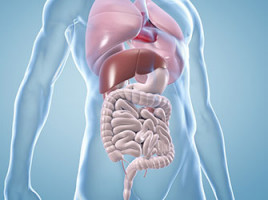
NICE has announced today that it has recommended lutetium (177Lu) oxodotreotide as a treatment option in adults within its marketing authorisation and for all approved indications of progressive, well differentiated (G1 and G2), somatostatin receptor positive gastroenteropancreatic neuroendocrine tumours (GEP-NETs).
This means that the treatment will now be available to patients via the NHS in England.
The European Commission (EC) approved marketing authorisation of lutetium (177Lu) oxodotreotide last year.
Lutetium (177Lu) oxodotreotide is a 177Lu-labeled somatostatin analogue peptide. It belongs to an innovative form of treatments called Peptide Receptor Radionuclide Therapy (PRRT), which involves targeting tumours with radiolabeled molecules that bind to specific receptors expressed by the tumour.
“We are very pleased to receive a positive recommendation from NICE,” commented Germo Gericke, M.D., Head of Research and Development at Advanced Accelerator Applications. “Lutetium (177Lu) oxodotreotide is the first treatment of its kind to receive regulatory approval and it is our hope that being recognised by NICE as a cost-effective treatment for all approved indications will facilitate broad availability of this therapy for GEP-NET patients in England.”
This positive recommendation is based on key evidence, including the results of a randomised, open label, phase 3 study, NETTER-1, in 229 patients with inoperable, metastatic or locally advanced, progressive midgut NET, which included head to head data comparing lutetium (177Lu) oxodotreotide with a double dose of Octreotide LAR in patients with inoperable midgut NETs progressive under standard Octreotide LAR treatment and overexpressing somatostatin receptors.
The primary outcome was progression-free survival (PFS) which was defined as time from randomisation to disease progression.
The median PFS was 28.4 months for lutetium (177Lu) oxodotreotide and 8.5 months in Octreotide LAR.
Additionally, data to inform efficacy was used from the Erasmus phase 1/2 trial.
This was conducted in more than 1,200 patients with a wide range of NET indications including foregut (pancreatic), midgut and hindgut.
The most common side effects seen with Lutathera treatment are nausea and vomiting, which occurred at the start of the infusions in around half of patients and may be related to the amino acid infusion.
Other common side effects affecting more than 1 in 10 patients are thrombocytopenia, lymphopenia, anaemia, pancytopenia, tiredness and reduced appetite.
“The clinical trial data and real-life experience of lutetium (177Lu) oxodotreotide indicate that this is a clinically beneficial treatment for GEP-NET patients with advanced disease,” stated Professor Martyn Caplin, Professor of Gastroenterology and Tumour Neuroendocrinology at the Royal Free London Hospital and University College London. “This recommendation from NICE is perhaps the most important approval of any treatment in NETs in a long time. Lutetium (177Lu) oxodotreotide fulfils an unmet need in this population of patients, who have progressed on other therapies.”
GEP-NETs, are a group of tumours originating in the neuroendocrine cells of numerous organs.
The estimated incidence of gastrointestinal NETs in the UK is approximately 2.65 per 100,000 per year, while the estimated incidence of pancreatic NETs in the UK is less than 0.2 per 100,000 per year.
However, since NETs are often slow-growing and associated with prolonged survival, the prevalence of NETs is relatively high.